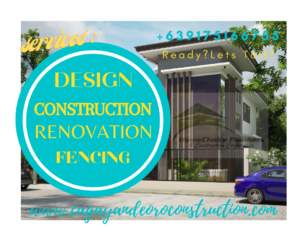How Much does it Cost to Build my New Home?
March 29, 2022 by rob · Filed under: Photo Gallery
Building your own house is a dream project for many. But it’s not one that should be taken lightly. You cannot just ask the cost without considering so many factors and dynamics. Or else it just a bluff. There are a huge range of financial, legal, and practical questions you should learn before you even begin! First among them is how much it even costs to build a house? Maybe you’ve always dreamed of building your own home. After all, home is where most of life’s biggest memories take place—who wouldn’t want to live in a brand-new house built just for them? The only problem is new things always come with a higher price tag. So how much does it cost to build a house these days? And will you be able to afford it? Some people want to build their dream home from the ground up. When you’re at the helm of your home, you’re in control of the property and its features. Whether you want cutting-edge energy-efficiency or hot design trends, it’s all in your hands. Plus, you avoid the cutthroat competition in the real estate market. But for anyone who planned to build their home since they were a kid, you may need to check your detailed expense estimates. The COVID-19 pandemic and the conflicts in Ukraine, caused the average cost to build a house to increase drastically compared to previous years. So, you may want to review the typical costs waiting for you as a home builder in 2022, including buying land, obtaining permits, designing the property and building it, and the necessary materials ( both structural and architectural). Factors like labor and supply shortages led to increased building costs over the course of the COVID-19 pandemic. So, the overall cost for home builders in 2022 and upcoming year may still be more higher than previous years. The golden rule of house building – investigate the costs in detail before you get started! Remember, unless you’re lucky enough to own a piece of land, or in a situation where you’re tearing down an old home to build a dreamy new one, purchasing land will have to factor into these costs. It’s going to be a whole lot more difficult and expensive to buy that land. Construction costs also vary by region, factoring in elements like local contractors, permits and licenses, materials, weather and even terrain. You can’t design a house on the back of a napkin. You’ll need to work closely with the architect and a builder to create a blueprint that provides a detailed plan for construction of your home. If you can find a design-build firm it would be much better. They can offer more flexible packages than separate ones. A qualified architect/builder not only helps create a practical vision of your dream, but should also know all the relevant building and zoning regulations. One of the single greatest risks to your house construction budget is overrun timelines. Every day that your project goes beyond the budgeted timeline is a day more you have to pay professionals to finish your home. It also has knock-on impacts such as having to continue to pay for your current accommodation beyond the budgeted time. That’s a major problem for cost escalation. Work closely with your architect and builders to create a sensible and achievable timeline for your home build with detailed documentations, contracts and specifications. Beware of being overconfident of how much you might get done yourself – novice home builders failing to appreciate how much time and effort they will have to pump into construction is a common stumbling block. Administration costs money, that’s true whether you’re buying a new home or building your own. That means paperwork and permits must be factored and should be inclusive into your budget. With the outline of your plans in place, and financing already considered, it’s time to get those pesky permits sorted. You should already have a good outline of the materials you want to use from your architectural and structural plans. Now, base on the details and items on both structural and architectural finishes, the builder now can give you rough estimates. Don’t be misguided on builders offering cheap cost, you will surely suffer. Take note, that the architects and the builder will just collate on your requirements-and by then the cost be determined more closely. Remember that material costs nowadays regularly fluctuates and increases, particularly if the earlier stages of permits and planning have taken longer than expected. We’re sure you’ve got a good idea in mind of what this might look like, but it’s down to the fine points where costs can start to come in. If your budget is becoming stretched, you could always go for a more affordable and practical interior design idea now, with the promise that you’ll upgrade to that dream kitchen or bathroom later. Sure, it might be aspirational to have that stunning Italian wallpaper and hardwood floors, but it’s not the same sacrifice as removing two bedrooms because you’re fixated on the budget for fittings. If you have the budget, and the desire, you should always hire or consult a professional designer and builder to really deliver on that final piece of your dream home. Furthermore, if you only had considerable budget, work closely to them to understand the dynamics and mechanics. Might be that your budget does not fit with want you want and desire.



